6 Causes Why Dog Spits Out Food and What You Must Do
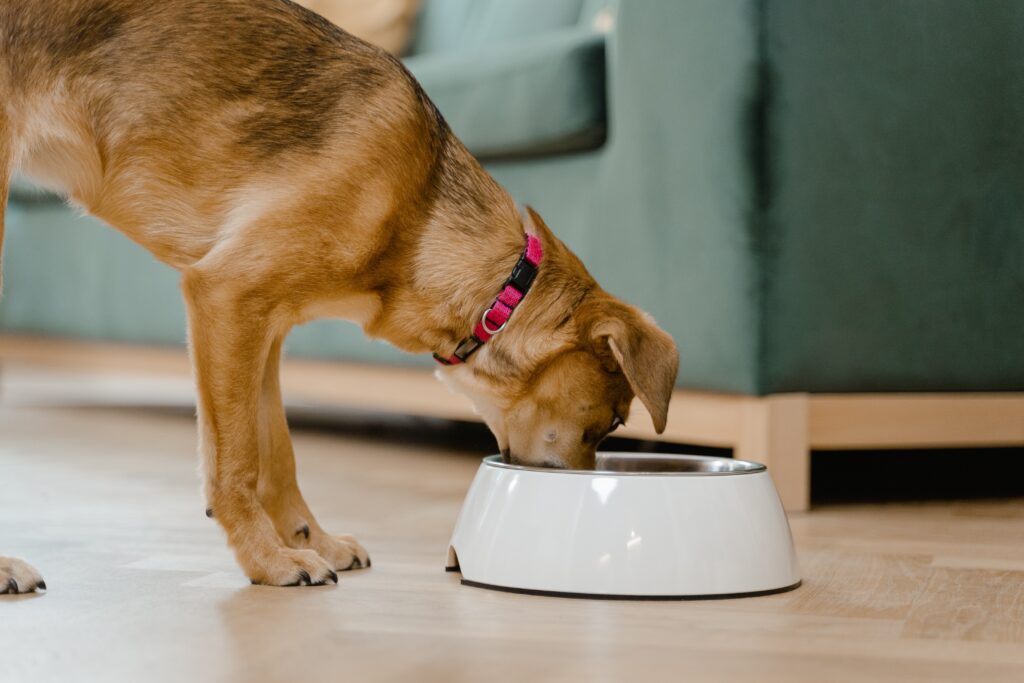
There could be various reasons why your dog spits out food. This could be due to the dog food you buy or maybe something’s wrong with your pet’s wellness.
For pet owners, it can sometimes be annoying. You go to a pet store, buy food with high hopes thinking your dog will love it. When you got home, your dog tasted it, but eventually, it only wasted out.
You might feel concerned or confused thinking if it’s alarming.
But don’t worry! We’ve outlined the potential reasons why your dog may spit out food, along with effective solutions.
1. Dental Problems
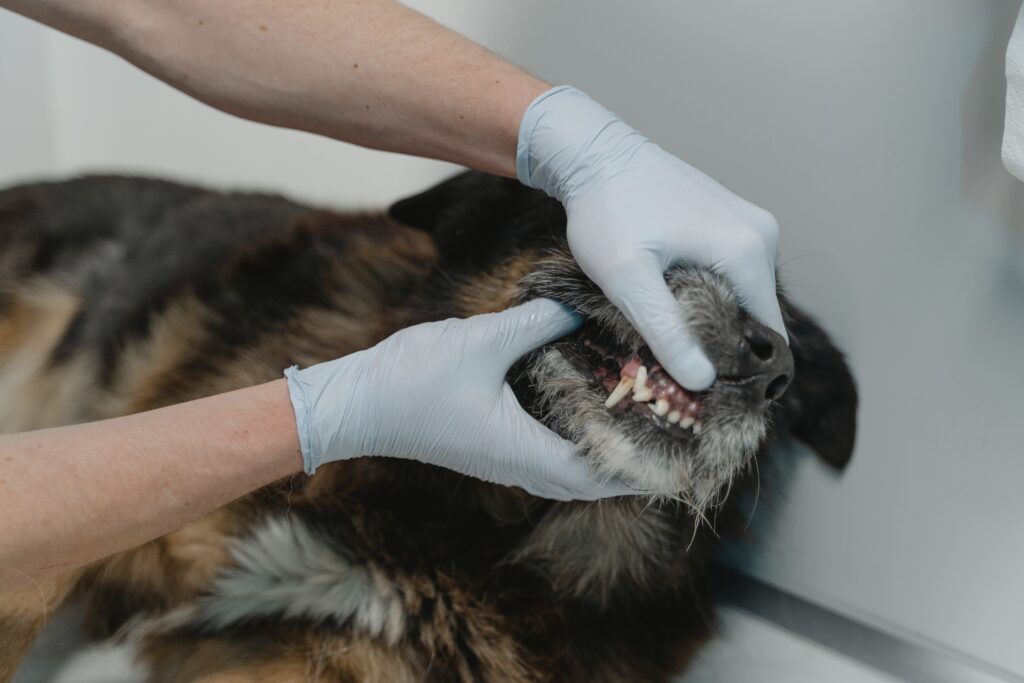

Imagine when you want to enjoy a delicious meal while dealing with dental discomfort, it makes eating an unpleasant experience.
Like humans, when dogs have dental issues, it could make them feel uncomfortable eating their food, leading them to spit it out.
Gum disease, tooth decay, and oral pain are also possible in our canine pets. Some of the common causes of dental problems in dogs are:
Tartar and Plaque Buildup
Dogs’ teeth can develop plaque and tartar over time, exactly as humans do. Food segments, bacteria, and saliva combine to create a sticky coating that, if left in place, hardens into tartar.
In addition to causing bad breath, this buildup acts as a breeding environment for bacteria, which can cause gum disease and tooth damage.
Poor Dental Hygiene
One of the main causes of dental issues in dogs is inadequate dental care.
Plaque and tartar build up over time and promote the emergence of dental problems if regular brushing and oral hygiene are not maintained.
For your furry friend’s oral health, neglecting normal dental care might have long-term effects.
Genetic Influences
Genetics can have a big impact and explain why some breeds are more prone to oral problems than others.
Shih Tzus, Yorkshire Terriers, and other small breeds frequently experience particular dental difficulties. These cute puppies are particularly vulnerable to tooth crowding because of their small height.
Beyond difficulties associated with size, some hereditary diseases can also affect tooth health. Dog teeth can vary in quality, development, and structure depending on inherited features.
Some breeds may be more likely to inherit dental issues such as missing teeth, teeth with malformations, or poor enamel.
The Age of Your Dog
Aging can bring about changes in a dog’s dental health, which is most likely the reason why a senior dog may spit out its food.
Factors such as decreased immune systems, the adverse effects of medications, or general wear and tear over time contribute to the increased occurrence of dental disorders. Senior dogs are more prone to oral infections, tooth loss, and periodontal disease.
However, age-related dental issues can be effectively addressed and managed with extra care and attention. This includes regular veterinary dental examinations, specialized oral care regimens, and appropriate dietary choices.
2. Eating too fast
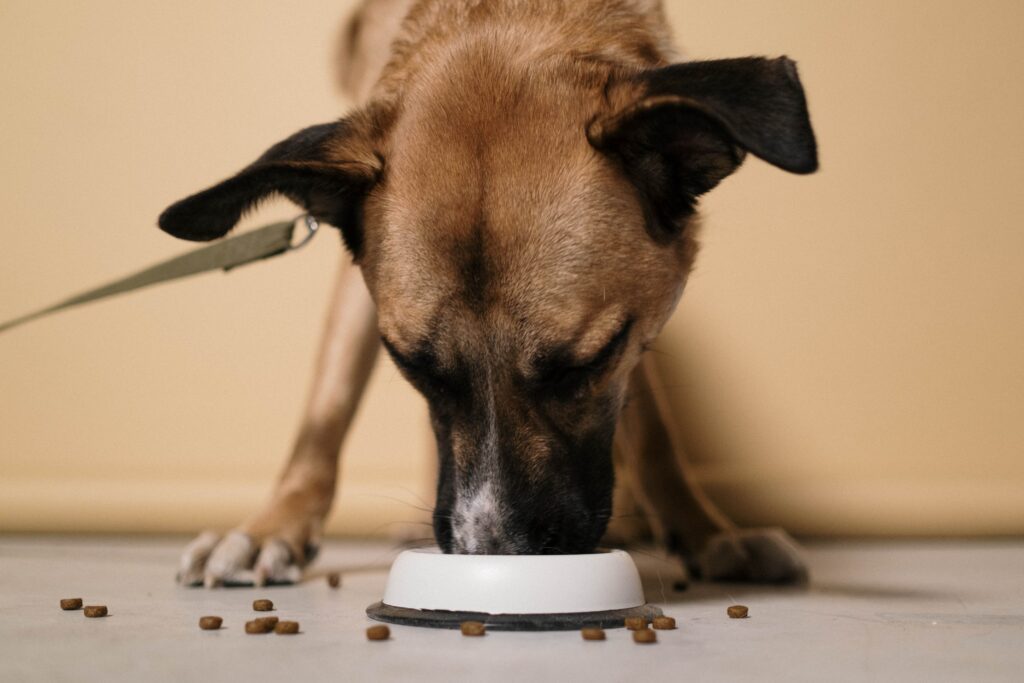

Some dog breeds eat voraciously and have the urge to swallow their food entirely without properly chewing it. This fast eating can lead to food being eaten whole or in big chunks, which can be uncomfortable or lead to the want to spit it out.
I encountered this issue with my own American Bully, Drogo, when I introduced a new dog food to him. He was incredibly excited to taste it and devoured the entire bowl in less than a minute, leaving him feeling bloated.
Consequently, he ended up spitting out the food.
To address this problem, I implemented a solution by dividing Drogo’s meals into smaller portions and feeding him more frequently throughout the day.
This approach helped prevent him from overeating and experiencing discomfort.
In addition to portion control, utilizing slow feeders and puzzle feeders can also be effective. These specialized feeding tools promote slower eating habits, improved digestion, and a reduced likelihood of food spitting.
They provide mental stimulation for your pup while encouraging them to eat at a more reasonable pace.
3. Palatability Issues
Dogs have preferences for flavor and texture, much like people do. Your dog may naturally spit out food if it doesn’t appeal to its taste buds or if it has gone rancid.
To encourage your dog to eat without resistance, try a variety of flavors, textures, and brands that suit their preferences.
Exploring Flavors
Dogs also have a wide variety of flavor preferences. While some canines might choose the richness of beef or the sweetness of fish, others would favor the savory flavor of chicken.
Trying out various flavors can encourage your dog to eat without refusing. To identify the ones that really catch their attention, think about experimenting with various protein sources or even looking at blends that combine multiple flavors.
Tempting Textures
Texture also has a significant impact on how much a dog enjoys their food. Some dogs may enjoy the crunchiness of kibble, while others may choose the moist and sensitive texture of wet food.
Their eating experience can significantly change if the texture balance is just correct.
Brand Exploration
Not all dog food brands are made equally, just like with any other product. Different brands each have their own distinct flavor profiles, quality requirements, and formulas.
If your dog constantly spits out their food, it can be worthwhile looking into various brands that provide a wide assortment of flavors and textures.
Look for recognized companies that use premium ingredients and take into account the tastes of dogs.
Ensuring Freshness
Dogs have a good sense of smell, and they will automatically reject food that has gone old or stale.
On the food packaging, always look for the expiration dates and storage suggestions. To guarantee freshness, properly close and store any open bags or cans.
Your dog’s food will stay fresh and tasty if you buy smaller food quantities or think about using airtight storage containers.
4. Health Issues
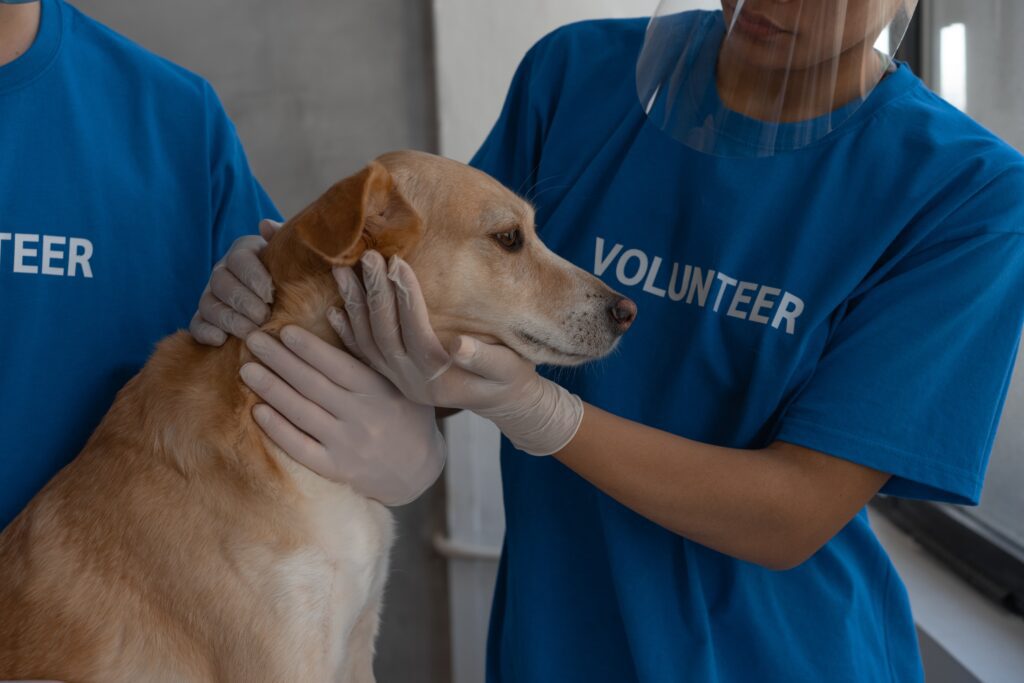

Underlying health issues can have a big impact on how easily and pleasantly your dog can eat and swallow. Your dog may spit out their food if they are having difficulty swallowing due to gastrointestinal problems, nausea, or esophageal issues.
In order to guarantee that your furry friend receives the required medical care and regains their eating comfort, it is critical to address these health issues as soon as possible.
Veterinarians have the knowledge to conduct comprehensive examinations, carry out required diagnostic tests, and create a personalized treatment plan that fits your dog’s needs.
5. Food Allergies or Sensitivities
Dogs may become allergic or sensitive to particular dietary additives. Your dog may reject or spit out their food as a result of these reactions, which can also appear as digestive problems, pain, or an allergy to particular substances.
This issue may require identifying and removing allergens from their diet or changing to a hypoallergenic diet.
Here are some of the signs your dog is allergic to its food:
- Skin irritations
- Excessive Scratching
- Ear infections
- Red bumps
- Vomiting
- Diarrhea
6. Walking the Dog Right After a Meal
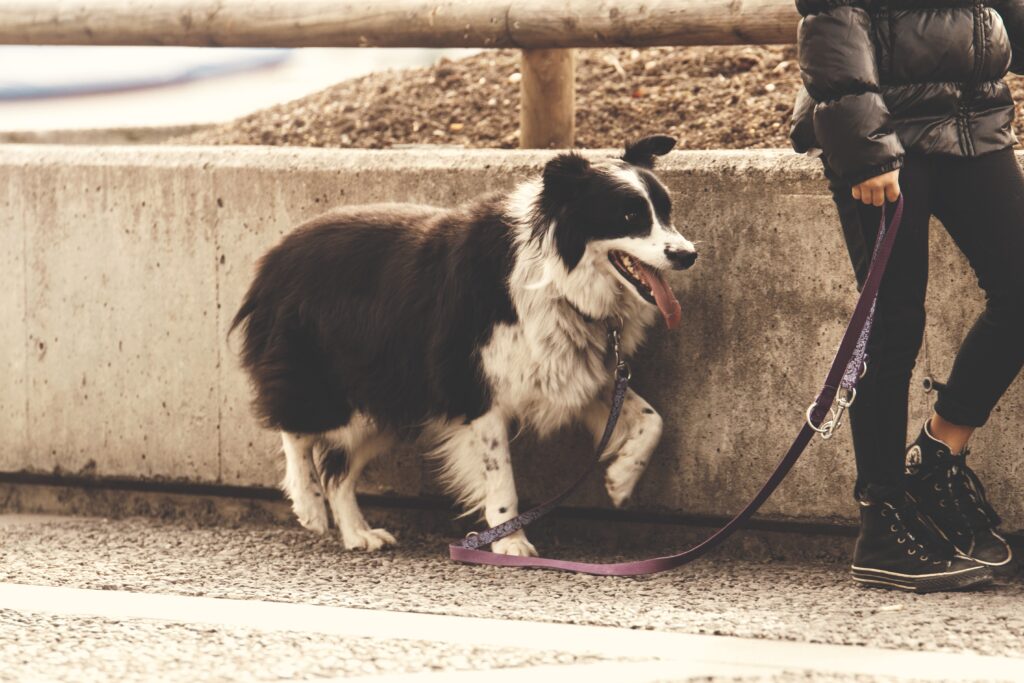

We all make mistakes when it comes to the well-being of our furry friends, and one common error is engaging in rigorous activity right after their meal.
I, too, have learned this lesson firsthand.
Picture this: I eagerly took my pup for a walk immediately after his meal, only to witness him feeling bloated and subsequently spitting out his food.
Apparently, the expelled food was undigested.
This experience taught me a valuable lesson about the importance of allowing proper digestion time for our canine companions.
To prevent such discomfort for your dog, it is recommended to wait at least 2 hours after they have consumed their meal before engaging in play or exercise.
On the other hand, it is important to leave a minimum of thirty minutes before feeding your dog.
By adhering to these guidelines, you ensure that your pup has adequate time to digest their food properly and minimize the risk of feeling bloated or experiencing any discomfort.
Effective Solutions and Tips for Dog Eating Habits
Create a Feeding Schedule
To control your dog’s eating habits, establish a regular feeding plan. Set specific mealtimes and adhere to them as closely as you can.
This schedule prevents your dog from overeating or begging for food in between meals and aids in the development of a sense of order in your pet.
Here’s a sample to get you started:
Morning:
- 7:00 AM: Serve your dog’s breakfast meal. Taking into account their age, size, and dietary requirements, measure the proper amount size. Put the food in the feeding bowls as directed.
Afternoon:
- 12:00 PM: Present a small treat or snack. This can be a few pieces of their usual dog food or a nutritious snack that is suitable for dogs. Choose healthy selections instead of goodies with plenty of calories.
Evening:
- 6:00 PM: Serve your dog’s dinner meal. To put food in their feeding bowl, measure out the proper portion size. A fresh supply of water should be available to them all day.
Keep in mind that each dog is different and has different nutritional requirements so it’s necessary to speak with your veterinarian.
Portion Management
To keep your dog at a healthy weight, proper portion control is necessary. Based on your dog’s age, breed, level of exercise, and general health, consult your veterinarian to establish the right portion size.
Overfeeding can be avoided by carefully measuring meals and using scoops or measuring cups made specifically for dog food.
Here’s a guide for portion management:
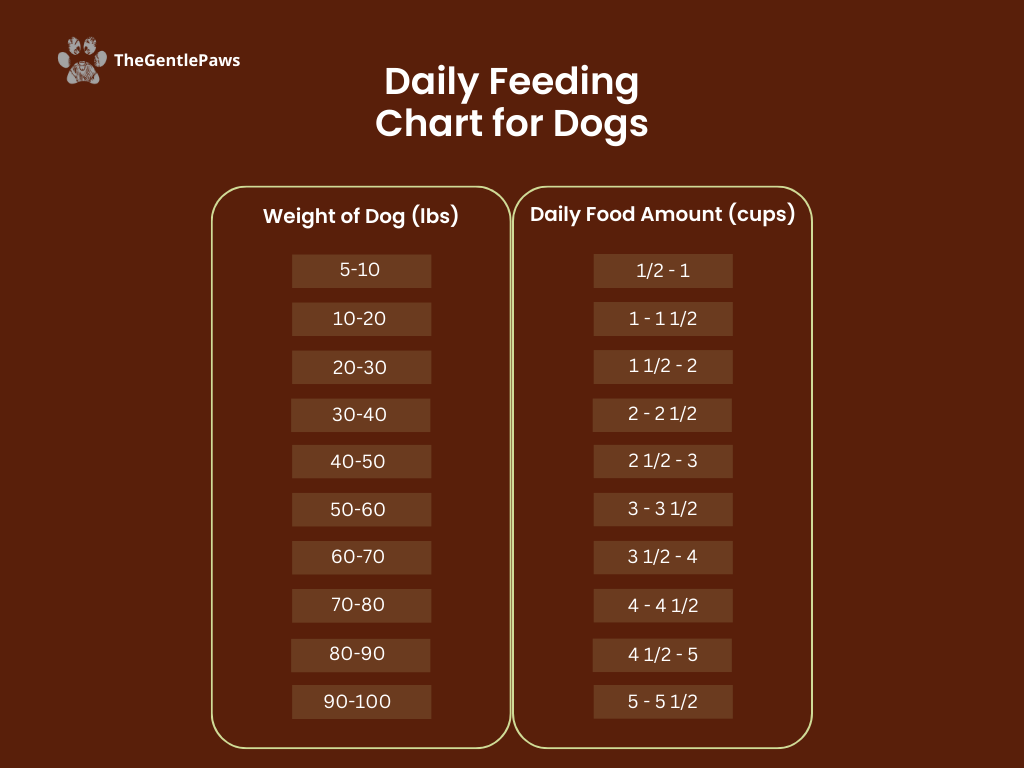

Please note that this is just a general guideline and the actual amount may vary depending on factors such as breed, activity level, and individual metabolism. It’s always recommended to consult with a veterinarian for specific feeding instructions tailored to your dog’s needs.
Slow Feeding Techniques
Slow feeding techniques work well to control your dog’s eating rate and encourage better digestion. Consider employing methods like food-dispensing toys or interactive feeders that make your dog work for their food rather than using a traditional bowl.
Another choice is scatter feeding, which involves dispersing your dog’s food across a large area to encourage foraging and meal searching.
You can also slow down the rate at which they eat by dividing their food into smaller parts and placing them in various areas or by utilizing slow feeder bowls with barriers.
You can avoid problems like bloating and choking while offering mental stimulation during mealtime by using these strategies.
Avoid Feeding Table Scraps
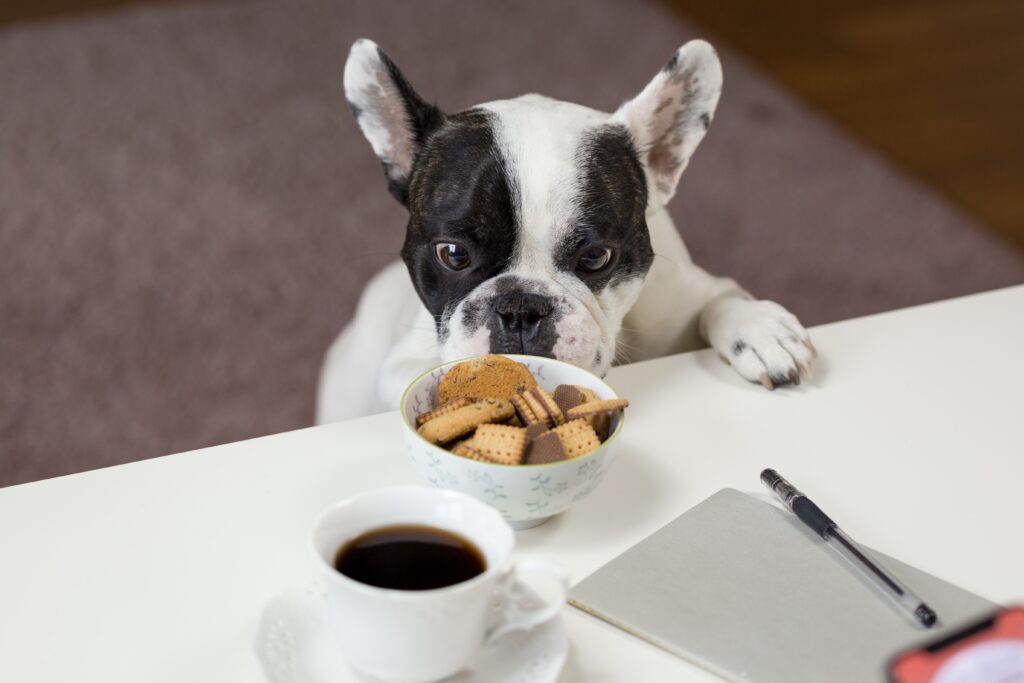

Imagine your dog looking at you with puppy eyes while eating your food, you might feel guilty not giving them a portion, right?
Unfortunately, it’s not a good practice with our pups!
Even though it could be tempting, it’s better to refrain from giving your dog portions from your own meals. Human food may contain large amounts of fat, salt, or seasonings that are unhealthy for dogs and might cause upset stomachs or weight gain.
Follow a balanced, nutrient-rich diet designed especially for dogs to make sure they get all the vital nutrients they require.
Regular Veterinary Check-ups
It’s important to take your dog to the vet frequently to have their general health, especially their feeding habits, monitored. Consult with your veterinarian to rule out any underlying health issues if you have any abrupt changes in appetite, weight loss, or other troubling eating behaviors.
They can address any worries, offer advice on healthy nutrition, and, if necessary, suggest suitable dietary changes.
When to Visit the Veterinarian
If your dog frequently spits out food or if their eating habits change suddenly, it is recommended that you contact a veterinarian. The occasional spitting out of food may not be a problem, but persistent or regular instances may point to a medical problem that needs to be addressed.
Here are some symptoms you need to consider before taking your canine to a vet:
- Regular or persistent food spewing out
- Eating-related refusal or appetite loss
- Pain or discomfort during eating
- Lack of weight gain or weight decrease
- Vomiting or food regurgitation
- Diarrhea or abnormalities in bowel habits
- Drooling too much or being too thirsty
- Lack of energy or lethargy
- Oral health concerns or bad breath
- Reactions to food or indications of food allergies
- Changes in behavior or mood that are clearly tied to eating
- Changes in eating habits that are sudden or significant
Keeping in mind that this is not a comprehensive list, you should address any worries you have about your dog’s feeding habits with a vet so they can do an accurate evaluation and provide you with advice.
FAQs
Why does my dog drop his food on the floor before he eats it?
Before eating, some dogs have a habit of dropping their food on the ground. They can be making their meal simpler to eat, trying to control it, or it might also come from excitement.
Why does my dog spit out his first bite of food?
There may be a number of factors for a dog to spit out their first food bite. It can be a result of an unexpected interruption or the flavor or texture not fitting their tastes. However, it’s best to keep an eye on your dog’s feeding habits and seek medical advice if your dog routinely spits out their first bite or exhibits other discomfort-inducing symptoms.
Why is my dog suddenly not interested in food?
Stress, underlying health conditions, environmental changes, or a decline in appetite are all possible causes of a sudden loss of interest in food. You should consult a veterinarian to determine the underlying reason for your dog’s lack of appetite if it lasts more than a day or is accompanied by other symptoms like lethargy or vomiting.
How do I stop my dog from dropping food?
You can attempt a few methods to stop your dog from dropping food if it does so frequently. Use a puzzle feeder or a flat, non-slip bowl to make it more difficult for them to drop the food.
Should I take my dog’s food away if he doesn’t eat it?
It’s not recommended to take your dog’s food away immediately if they don’t eat it. Instead, you can leave the food available for typically around 15 to 20 minutes. This allows your dog the opportunity to eat at their own pace and according to their individual appetite.
Promote Healthy Eating Habits
In conclusion, it might be stressful and confusing if your dog spits out food. Understanding the potential causes of this behavior will help you effectively handle the problem.
Whether it’s dental problems, food sensitivities, eating too quickly, or underlying health conditions, there are solutions and strategies to help your dog enjoy their meals and maintain their overall well-being.
Always keep in mind that every dog is different, so it could take some trial and error to find the best method.
Patience, observation, and a proactive approach to your dog’s health will go a long way in ensuring they receive the nourishment they need and enjoy their meals to the fullest.
With the right attention and care, you can promote healthy eating habits in your dog and deepen the connection between you and your canine companion.
